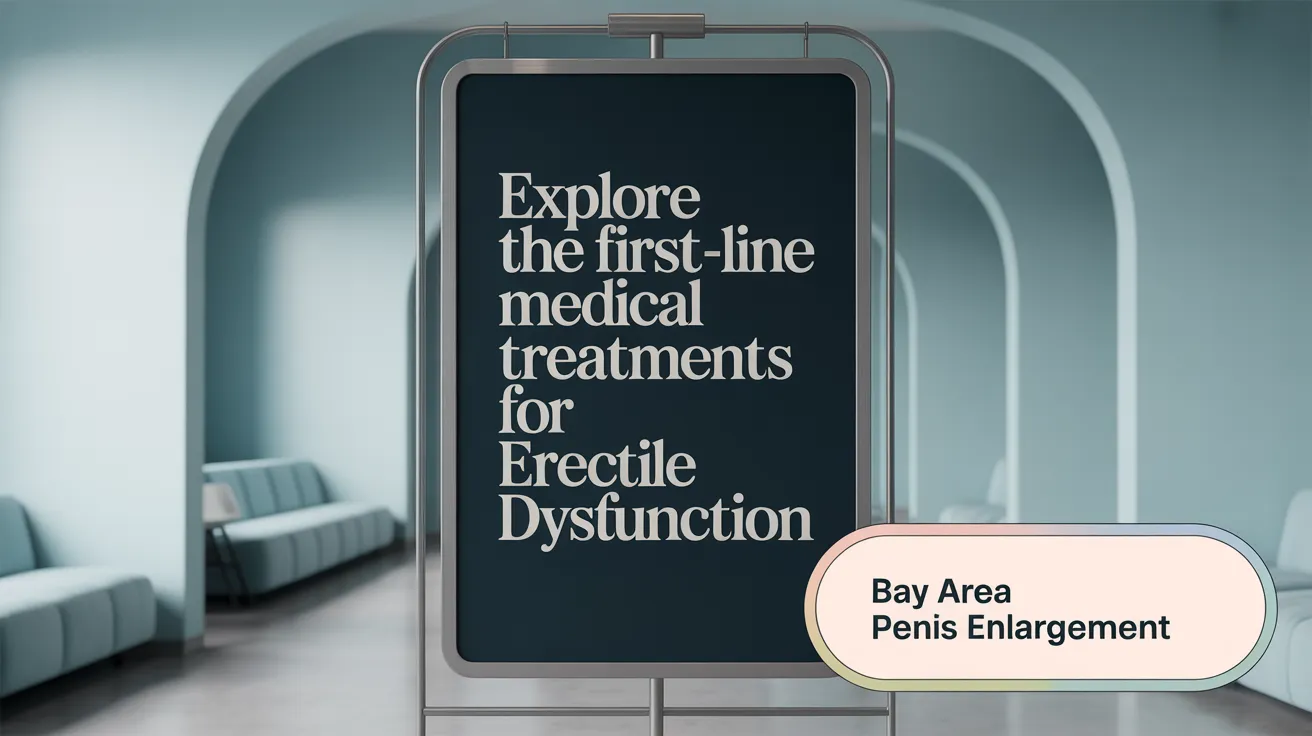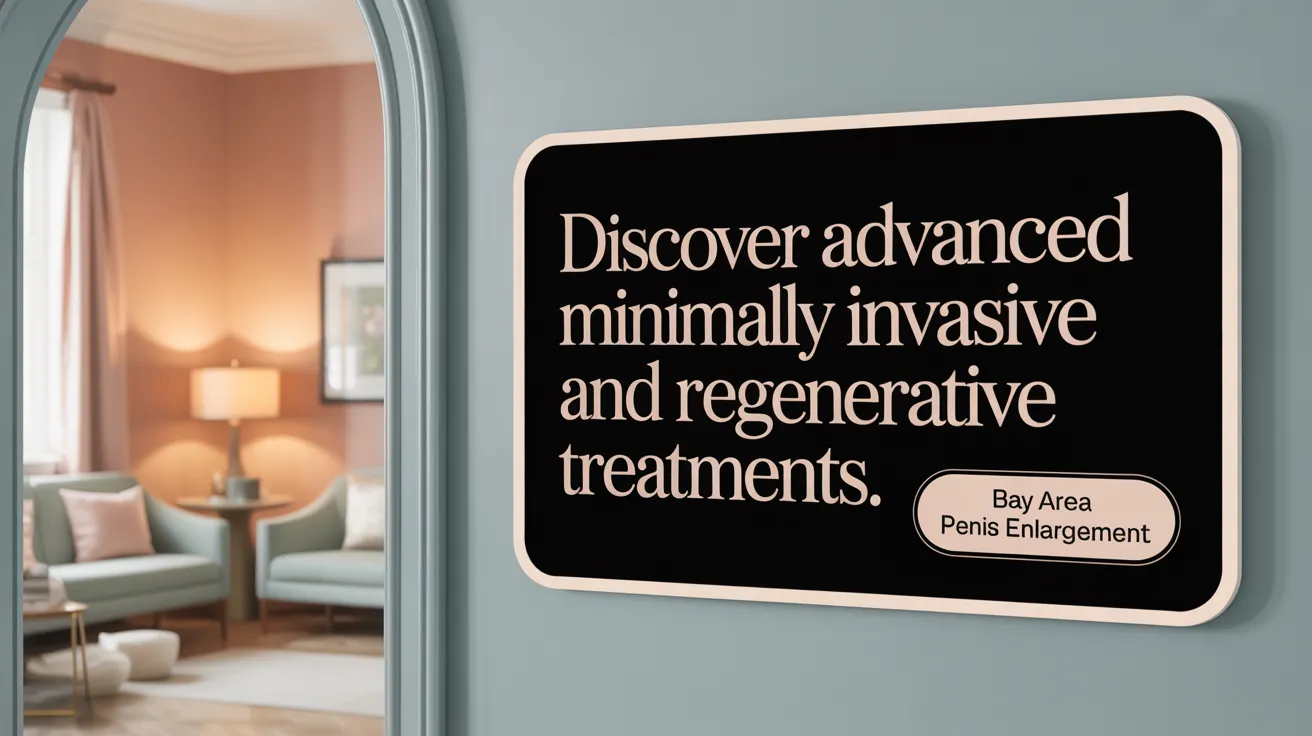Understanding Male Enhancement
Male enhancement encompasses a broad range of treatments aimed at improving penile size, erectile function, and overall sexual confidence. With growing societal emphasis on sexual health and aesthetics, more men seek effective solutions. However, choosing the right treatment plan requires understanding the medical evidence, potential risks, and personal goals. This guide explores the main options in male enhancement—ranging from erectile dysfunction medications to surgical and non-surgical procedures—offering insight to help men make informed decisions tailored to their needs.
Medical Treatments for Erectile Dysfunction: First-Line Options

What are the primary medications used to treat erectile dysfunction?
Erectile dysfunction (ED) affects over half of men aged 40 to 70. The cornerstone of medical treatment is the use of phosphodiesterase type 5 (PDE5) inhibitors. These FDA-approved drugs include sildenafil (Viagra) for ED, tadalafil (Cialis) benefits and duration, vardenafil (Levitra) potency and side effects, and avanafil (Stendra). They work by relaxing penile muscles and increasing blood flow during sexual stimulation, aiding in achieving and maintaining an erection.
How do different PDE5 inhibitors vary and influence treatment choice?
Each PDE5 inhibitor has unique properties:
- Sildenafil acts quickly and lasts about 4 to 5 hours but can be delayed by fatty meals (see more).
- Tadalafil has the longest effect, lasting up to 36 hours, allowing for more spontaneous sexual activity (learn here).
- Vardenafil is more potent and selective, which might reduce side effects and lasts 5 to 7 hours (details.
- Avanafil has a rapid onset and fewer side effects but is typically more costly (overview). Choice depends on personal needs, lifestyle, onset and duration preferences, as well as cost and side effect profiles (how to choose).
How do testosterone levels affect ED treatment?
Testosterone plays a crucial role in sexual desire and arousal. Low testosterone levels can hinder the effectiveness of PDE5 inhibitors (find out more. In such cases, testosterone replacement therapy may be considered, but it requires careful medical assessment due to potential cardiovascular risks (risks and benefits).
What are the side effects and contraindications?
Common side effects of PDE5 inhibitors include headaches, nasal congestion, and stomach discomfort (side effects list. Serious risks like prolonged erections (priapism), sudden vision or hearing loss require immediate medical attention (urgent symptoms). ED drugs should never be combined with nitrates used for chest pain, as this can lead to dangerous drops in blood pressure (contraindications.
How do lifestyle factors impact treatment effectiveness?
Lifestyle choices greatly influence ED and its treatment. Smoking, obesity, poor diet, limited physical activity, excessive alcohol use, and stress worsen erectile function (lifestyle impact). Improvements in these areas can enhance medication efficacy and overall sexual health (healthy lifestyle tips.
Why is medical supervision important when using ED medications?
Medical supervision ensures safe use by preventing harmful drug interactions and tailoring therapy to individual health, including managing underlying causes such as diabetes or heart disease (importance of supervision. Doctors can also prescribe compounded or customized medications to reduce side effects and improve outcomes (customized treatments.
By combining medication with lifestyle modification and professional guidance, men with ED can achieve more effective and safer treatment results (comprehensive care.
Lifestyle Modifications and Non-Pharmaceutical Interventions
What lifestyle changes support male enhancement and ED treatment?
Making positive lifestyle changes can significantly improve erectile dysfunction (ED) and support male enhancement efforts. Quitting Smoking and ED is crucial, as smoking damages blood vessels and reduces nitric oxide production, essential for erections. Limiting Alcohol for ED also helps enhance blood flow and minimize ED symptoms. Engaging in regular aerobic exercises, such as cycling, swimming, or running, boosts cardiovascular health and testosterone levels, which can improve erectile function. For more information on improving blood flow naturally, see Increase blood flow to the penis naturally.
A balanced diet, particularly Mediterranean or similar healthy eating patterns, supports vascular health and hormone balance. Stress reduction techniques like meditation, yoga, and breathing exercises lower cortisol, which otherwise impairs erectile function. Pelvic floor muscle exercises (Kegels) strengthen muscles that regulate blood flow to the penis, offering an effective non-pharmaceutical approach to improving erections.
How can psychological support augment treatment?
Psychological factors often play a significant role in ED. Counseling for Erectile Dysfunction address underlying issues such as anxiety, depression, or relationship stress, which can worsen ED symptoms. Involving Partners in ED Treatment involves partners and promotes communication, reducing performance anxiety and improving sexual satisfaction.
Integrating psychological support with physical treatments enhances overall outcomes. Together, lifestyle adjustments and counseling provide a holistic approach that strengthens sexual confidence and long-term erectile health.
Penile Enhancement Procedures: Surgery and Advanced Medical Interventions

When is penile enlargement surgery considered?
Penile enlargement surgery is typically considered for medical reasons such as micropenis or buried penis, conditions that impact urination and sexual function. These surgeries are also offered to men with significant dissatisfaction regarding penile size, but only after comprehensive psychological assessment. Cosmetic reasons alone seldom justify surgery due to the associated risks and mixed outcomes. For detailed information on penis enlargement surgery, see the Cleveland Clinic resource.
What are the common surgical methods and their risks?
Common surgical techniques include:
- Suspensory ligament release (ligamentolysis): aims to increase apparent length by allowing the penis to hang lower.
- Autologous fat injections: add girth using the patient's own fat tissue.
- Dermal fat grafts: use skin and fat to increase size.
- Penuma implant: an FDA-approved silicone device to enhance girth and length.
These procedures carry risks such as infection, scarring, nerve damage leading to loss of sensation, erectile dysfunction, and potential dissatisfaction with results. Recovery can vary but often extends up to six weeks before resuming normal sexual activity. More about surgery risks and outcomes can be found in Penis Enlargement Surgery risks.
Recovery considerations
Post-surgical recovery depends on the procedure but generally includes avoiding sexual activity for several weeks, monitoring for signs of infection or complications, and attending follow-up visits. Patients may experience swelling, bruising, or discomfort during healing. See more on postoperative recovery for penis surgery for guidance.
Emerging technologies in penile augmentation
Recent advances include minimally invasive techniques combining filler technology and regenerative medicine, such as platelet-rich plasma (PRP), which enhance tissue quality and vascular health with faster recovery and natural results. The Penuma implant offers a shorter surgery time with low complication rates, and new tunica expansion methods allow girth and length enhancement while preserving function. For further insights on cutting-edge penis enhancement procedures, the Center for Advanced Urology provides excellent resources.
Why is psychological assessment important before surgery?
Psychological evaluation is critical to identify body image disorders like penile dysmorphophobia or small penis anxiety, which can skew patient expectations. This assessment helps ensure surgery addresses genuine functional or aesthetic needs and supports patients in maintaining realistic expectations, thereby reducing dissatisfaction and the risk of undergoing unnecessary procedures. For comprehensive information on psychological aspects and good practices in penile enhancement, see Psychological assessment in penile enhancement.
Minimally Invasive and Regenerative Male Enhancement Treatments

What minimally invasive treatments are available for penile enhancement?
Several advanced, non-surgical options exist to enhance penile aesthetics and function.
Injectable Fillers: FDA-approved dermal fillers like hyaluronic acid (commonly known as the Magic Shot™) are injected into the penis to increase girth. These procedures are minimally invasive and provide immediate, natural-looking results. Learn more about injectable penile treatments and penile fillers with hyaluronic acid.
Platelet-Rich Plasma (PRP) Therapy: PRP involves drawing the patient's blood, concentrating the platelets rich in growth factors, and injecting them into the penis. This stimulates tissue regeneration and improves blood flow, supporting enhanced erectile performance. Learn more about PRP penile injections and PRP therapy for erectile dysfunction.
Shockwave and Pulsewave Therapy: These treatments use low-intensity sound waves aimed at promoting new blood vessel growth and improving nerve function in penile tissues. They are drug-free, non-invasive procedures that enhance erectile quality and may reduce reliance on medications. See details on pulsewave therapy for ED and shockwave therapy for sexual health.
Penile Botox Injections: Botox can increase penile girth and improve erectile frequency by relaxing smooth muscle tissue and enhancing blood flow. More information available at male enhancement treatments.
How effective and safe are these advanced treatments?
These minimally invasive therapies generally have a favorable safety and effectiveness profile:
Recovery times are short, often just 24 to 48 hours, allowing patients to resume normal activities quickly.
Results from injectable fillers can last from six months up to four years depending on individual factors, while PRP and shockwave therapies can have effects lasting up to one to two years or more.
Side effects tend to be minor, such as mild swelling or bruising, and resolve without intervention when performed by qualified professionals using FDA-approved materials.
Beyond physical improvements in length, girth, and erectile function, patients often experience enhanced self-confidence, body image, and sexual satisfaction.
These treatments offer promising alternatives or complements to traditional surgical procedures, focusing on both aesthetics and functional sexual health.
Non-Surgical Physical Techniques: Traction and Stretching Devices
Mechanism and Use of Penile Traction Devices
Penile traction devices are designed to apply gentle, consistent stretching force to the penis over extended periods. The goal is to promote cellular growth through microtears and remodeling in penile tissue, potentially leading to increased length. These devices are typically used daily for several hours over months. For more information, see Penis Stretching Exercises and Penis enlargement effectiveness.
Evidence on Effectiveness and Safety
Scientific studies suggest traction devices can modestly increase penis length by approximately 1 to 3 centimeters after prolonged and consistent use. However, evidence is limited, and the safety profile is not fully established. They are primarily effective in correcting deformities such as Peyronie’s disease rather than significantly enhancing size. See also Penile augmentation methods and Risks of penis enlargement procedures.
Manual Stretching Exercises and Risks
Manual exercises like jelqing involve repetitive stretching by hand to encourage tissue expansion. These exercises lack strong scientific support and are generally considered ineffective for permanent enlargement. Additionally, they carry risks including bruising, fibrosis, tissue damage, and impaired erectile function if performed incorrectly. Refer to Penis Stretching Exercises and Pumping and jelqing methods.
Vacuum Devices' Role and Limitations
Vacuum erection devices (VEDs) are approved medical treatments for erectile dysfunction, working by increasing blood flow to the penis. While beneficial for ED, they do not increase penile size. Overuse or misuse of vacuum devices as enlargement tools can lead to tissue damage or vascular problems. For detailed info, visit Vacuum Devices for ED and Vacuum devices and penis size.
Advisories on Unproven or Unsafe Methods
Non-surgical methods such as creams, pills, and supplements marketed for penis enlargement lack scientific evidence of effectiveness. Many products are unregulated and may contain harmful substances. Healthcare professionals strongly advise consulting specialists before attempting such treatments to avoid adverse effects. See Sexual enhancement product dangers and Male enhancement pills effectiveness.
| Technique | Effectiveness | Safety Considerations | Typical Outcomes |
|---|---|---|---|
| Traction Devices | Modest size increase (1-3 cm) with long-term use | Limited safety data; potential mild discomfort | Lengthening modestly achievable; mainly for deformities |
| Manual Stretching (Jelqing) | No solid evidence; unlikely effective | Risk of bruising, fibrosis, and tissue damage | Possible injury; no reliable size gain |
| Vacuum Devices (VED) | Effective for ED, not size increase | Safe when used as directed; risk if misused | Improved erection quality; no enlargement |
| Pills, Creams, Supplements | Unsupported; no proven effect | Potential for harmful ingredients and side effects | No reliable benefits; possible health risks |
Choosing the Right Healthcare Provider and Personalized Treatment Planning

Why is selecting a qualified healthcare professional crucial for male enhancement?
Choosing a board-certified urologist or specialist is vital due to the sensitive and complex anatomy of the penis. Qualified professionals provide safe procedures backed by thorough evaluations, including physical exams for erectile dysfunction and psychological assessments. They have the expertise to manage risks such as infection, scarring, or erectile dysfunction which can arise during treatments.
How does personalized treatment planning improve outcomes?
Each patient presents unique health factors including age, lifestyle habits, hormone levels, and psychological condition. Personalized evaluation allows specialists to tailor treatment plans suited to these individual needs and goals. This approach improves treatment effectiveness, reduces side effects, and helps set realistic expectations, resulting in increased satisfaction and confidence. See more about personalized treatment plans for penile girth.
Considering medical history and lifestyle factors
A comprehensive assessment includes medical history such as smoking habits, diabetes, prior surgeries, and medication use. Lifestyle factors like physical activity, diet, and stress levels are also evaluated. This holistic understanding informs safer and more effective therapy choices. Learn more about lifestyle changes for erectile dysfunction and treatment options.
Customization of treatments to individual goals
Treatments may range from PDE5 inhibitors for erectile dysfunction to advanced penile enhancement procedures using fillers or regenerative medicine. Professionals determine the best method based on patient goals—whether improving function, appearance, or both.
What role does follow-up care play?
Post-treatment follow-up is essential to monitor recovery, detect complications early, and adjust treatment as needed. It ensures the longevity of results, manages any side effects, and supports ongoing patient wellbeing. Regular communication with the healthcare provider enhances overall treatment success.
Choosing the right provider combined with a personalized treatment plan and diligent follow-up greatly improves the safety, efficacy, and satisfaction of male enhancement and erectile dysfunction therapies.
Psychological and Emotional Considerations in Male Enhancement

How do psychological factors influence male enhancement decisions?
Many men seeking male enhancement treatments actually have penises within the normal size range. However, they often experience psychological conditions such as small penis syndrome (SPS) or body dysmorphic disorder (BDD), leading to dissatisfaction with their perceived size. These body image issues strongly drive the demand for enhancement procedures and can significantly affect treatment satisfaction. Learn more about psychological factors in penile enlargement.
What psychological support options assist men considering enhancement?
Psychotherapy, counseling, and sex therapy provide vital support to men struggling with anxiety, self-esteem, and unrealistic perceptions about their penis size. These approaches help address underlying mental health concerns, improving emotional well-being and enhancing the effectiveness of physical treatments. See more on psychological assessment in penile enhancement and counseling for erectile dysfunction.
Why is managing expectations important?
Setting realistic expectations is crucial to prevent dissatisfaction. Many male enhancement procedures yield modest size or functional improvements rather than drastic changes. Understanding attainable outcomes helps men appreciate the benefits without frustration, promoting healthier decision-making and long-term satisfaction. For guidance on setting realistic expectations for penis enlargement, refer to trusted sources focused on safe and effective penis enlargement treatments.
Integrating mental health with physical treatments
A multidisciplinary approach that integrates psychological counseling with medical or surgical interventions yields the best results. Addressing mental health alongside physical enhancement optimizes overall well-being, relationship intimacy, and sexual satisfaction. Before any procedure, psychological evaluation is recommended to tailor treatments and support to individual needs, in line with comprehensive ED care and psychological assessment.
Evaluating Risks, Benefits, and Long-Term Outcomes
What are the typical risks associated with male enhancement treatments?
Male enhancement treatments vary widely in risk depending on the method. Surgical options can lead to serious complications such as infection, scarring, loss of sensation, erectile dysfunction, and dissatisfaction with outcomes. Injections of dermal fillers, like hyaluronic acid, tend to be safer but might cause minor side effects including inflammation or nodules. Non-invasive lifestyle changes and regenerative therapies, such as shockwave therapy and platelet-rich plasma (PRP) injections, generally carry minimal side effects and are well-tolerated. For more on risks of penis enlargement procedures and penile injectable fillers, see related discussions.
What potential complications arise from surgery and injections?
Surgical complications may include unfavorable scarring, penile deformities, risk of infections, and sometimes the need for repeat interventions. Injectable treatments can result in temporary swelling, bruising, or more rarely, nodules. Though safer than surgery, injections should be performed by qualified specialists to minimize risks. For more details on these risks, see Penis Enlargement Surgery and Penile injectable fillers.
What are the benefits of non-invasive therapies?
Non-invasive treatments like shockwave therapy and PRP injections improve blood flow, tissue quality, and erectile function without downtime or surgical risks. They provide natural, balanced aesthetic and functional improvements and often show results lasting months to years. These options are covered under Advanced penis enhancement procedures and Safe male enhancement injections.
How effective are medical and regenerative treatments in the long term?
Medications such as PDE5 inhibitors reliably enhance erectile function but require ongoing use. Regenerative therapies stimulate tissue repair and vascular growth, offering promising longer-term benefits lasting up to several years. Surgical outcomes vary with higher risk but can produce notable enhancements when indicated medically. For a detailed review of ED treatment options and innovative ED therapies, see those resources.
Why is evidence-based treatment selection important?
Choosing treatments supported by scientific research and delivered by experienced professionals reduces health risks, optimizes results, and helps maintain patient safety. Avoiding unproven products reduces harm. For evidence-based options and expert care, visit Comprehensive Urology Clinic.
What cautions apply to male enhancement products?
Many over-the-counter pills, creams, and supplements are unregulated, often contain hidden harmful ingredients, and lack proof of effectiveness. Consulting a healthcare provider before using such products is crucial to avoid adverse health impacts. See the FDA alerts on sexual enhancement products and information on male enhancement pills risks.
Overall, careful evaluation of treatments, understanding their risks and benefits, and relying on evidence-based options are essential for safe and effective male enhancement outcomes.
Making Informed Decisions in Male Enhancement
Selecting the appropriate male enhancement treatment requires a nuanced understanding of the available medical, surgical, and non-surgical options, along with a thorough assessment of individual health, psychological state, and desired outcomes. Evidence-based treatments—from FDA-approved medications for erectile dysfunction to advanced regenerative therapies—offer safe and effective benefits when tailored by qualified healthcare professionals. At the same time, lifestyle improvements and psychological support play vital roles in optimizing sexual health and satisfaction. Patients are urged to approach enhancement thoughtfully, engage with reliable specialists, and maintain realistic expectations to ensure both safety and fulfillment in their treatment journey.

